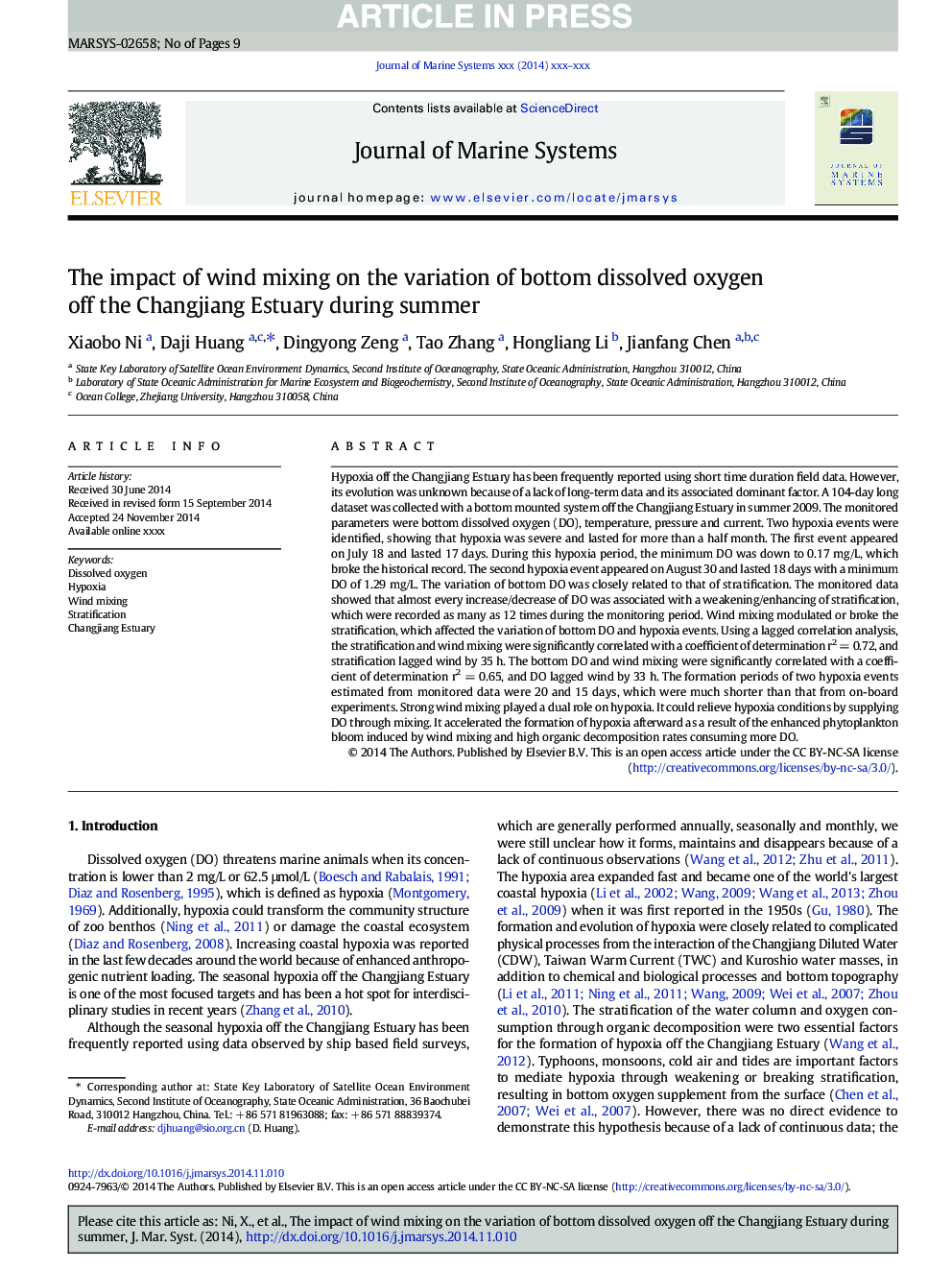| Article ID | Journal | Published Year | Pages | File Type |
|---|---|---|---|---|
| 6386688 | Journal of Marine Systems | 2016 | 9 Pages |
Abstract
Hypoxia off the Changjiang Estuary has been frequently reported using short time duration field data. However, its evolution was unknown because of a lack of long-term data and its associated dominant factor. A 104-day long dataset was collected with a bottom mounted system off the Changjiang Estuary in summer 2009. The monitored parameters were bottom dissolved oxygen (DO), temperature, pressure and current. Two hypoxia events were identified, showing that hypoxia was severe and lasted for more than a half month. The first event appeared on July 18 and lasted 17Â days. During this hypoxia period, the minimum DO was down to 0.17Â mg/L, which broke the historical record. The second hypoxia event appeared on August 30 and lasted 18Â days with a minimum DO of 1.29Â mg/L. The variation of bottom DO was closely related to that of stratification. The monitored data showed that almost every increase/decrease of DO was associated with a weakening/enhancing of stratification, which were recorded as many as 12 times during the monitoring period. Wind mixing modulated or broke the stratification, which affected the variation of bottom DO and hypoxia events. Using a lagged correlation analysis, the stratification and wind mixing were significantly correlated with a coefficient of determination r2Â =Â 0.72, and stratification lagged wind by 35Â h. The bottom DO and wind mixing were significantly correlated with a coefficient of determination r2Â =Â 0.65, and DO lagged wind by 33Â h. The formation periods of two hypoxia events estimated from monitored data were 20 and 15Â days, which were much shorter than that from on-board experiments. Strong wind mixing played a dual role on hypoxia. It could relieve hypoxia conditions by supplying DO through mixing. It accelerated the formation of hypoxia afterward as a result of the enhanced phytoplankton bloom induced by wind mixing and high organic decomposition rates consuming more DO.
Related Topics
Physical Sciences and Engineering
Earth and Planetary Sciences
Oceanography
Authors
Xiaobo Ni, Daji Huang, Dingyong Zeng, Tao Zhang, Hongliang Li, Jianfang Chen,
